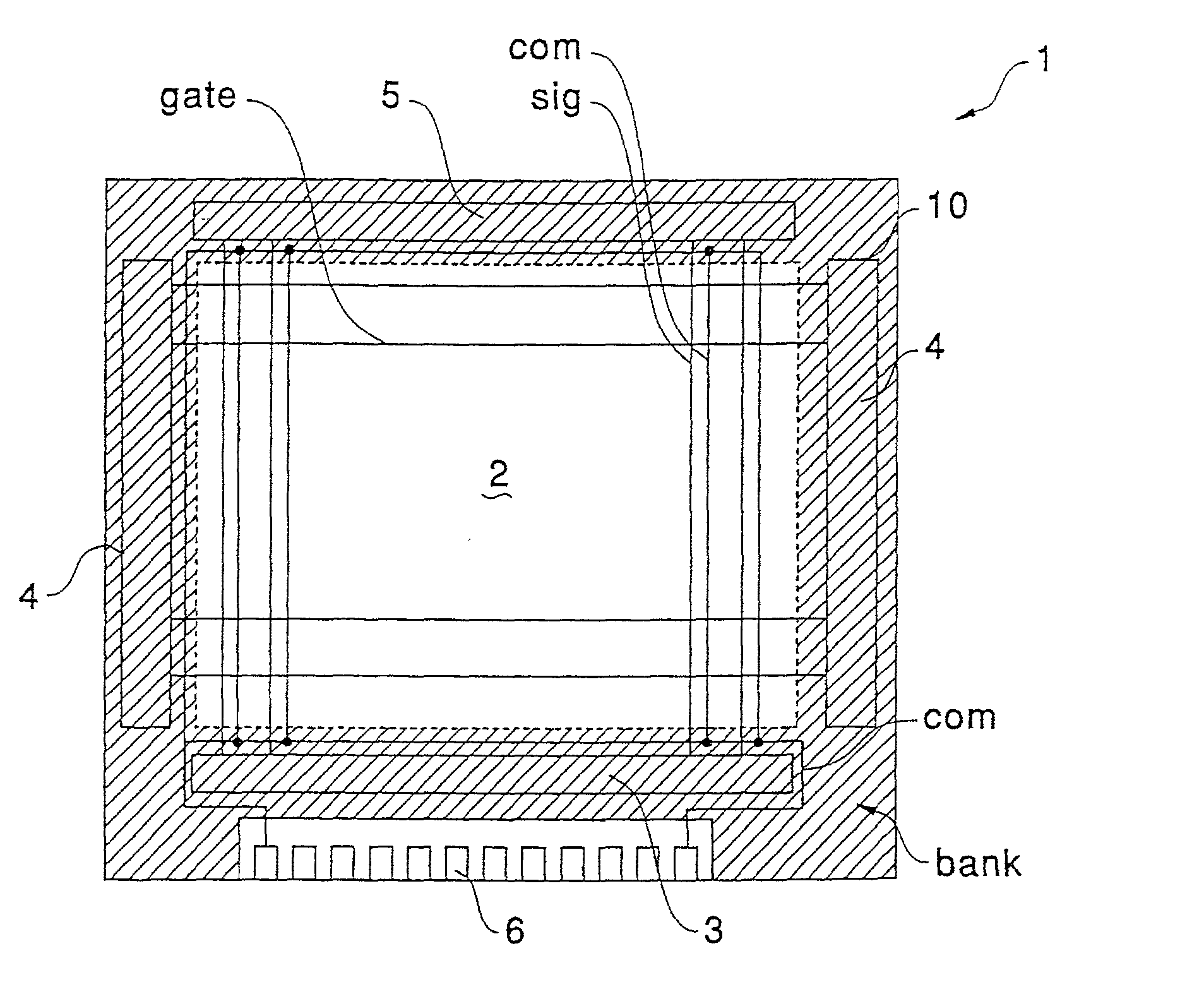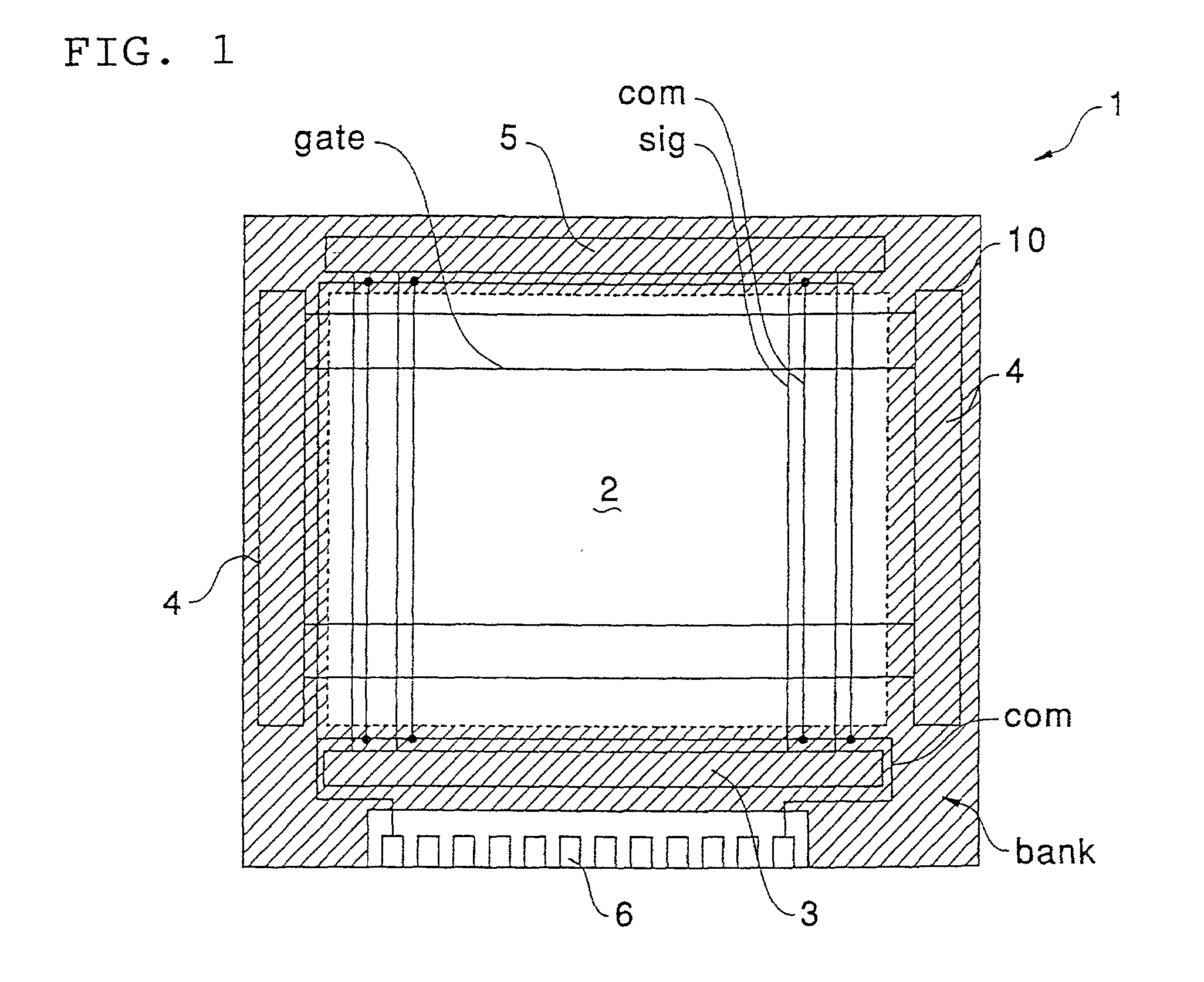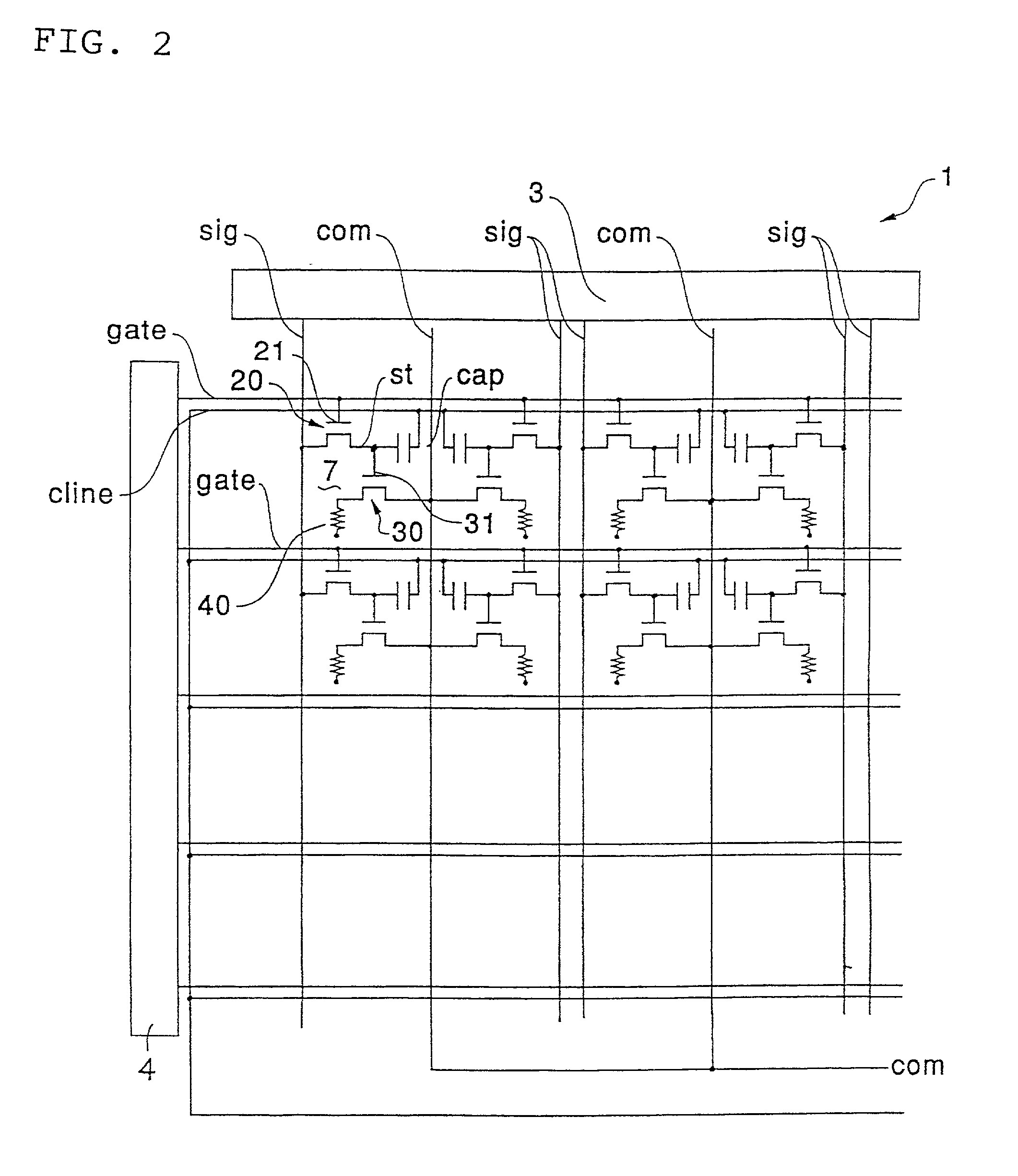Display apparatus
- Summary
- Abstract
- Description
- Claims
- Application Information
AI Technical Summary
Benefits of technology
Problems solved by technology
Method used
Image
Examples
embodiment 1
[0113] [Embodiment 1 for Carrying Out the Invention]
[0114] FIG. 15 is an equivalent circuit diagram showing the pixel structure in the display apparatus 1 in this embodiment. FIGS. 16(A) and (B) are a schematic representation showing electrical connections of each element formed in each pixel, and a wave form chart showing potential changes of driving signals and the like respectively.
[0115] In this embodiment, as shown in FIG. 15 and FIGS. 16 (A) and (B), the first TFT 20 is of an N channel type. Accordingly, when the potential of the scanning signal "S gate" supplied from the scanning line "gate" becomes high, the first TFT 20 turns "on", and the image signal "data" is written into the holding capacitor "cap" from the data line "sig" through the first TFT 20. On the other hand, the potential of the scanning signal "Sgate" supplied from the scanning line "gate" is low, the second TFT is driven and controlled by the image signal "data" held by the holding capacitor "cap".
[0116] In t...
embodiment 2
[0130] [Embodiment 2 for Carrying Out the Invention]
[0131] FIG. 19 is an equivalent circuit diagram showing the pixel structure in the display apparatus 1 of this embodiment. FIGS. 20(A) and (B) are a schematic representation showing electrical connections of each element formed in each pixel, and a wave form chart showing potential changes in the driving signal and the like, respectively. In this embodiment, as shown in FIG. 19 and FIGS. 20(A) and (B), the first TFT is formed with an N channel type and the second TFT is formed with a P channel type. Since the second TFT 20 is of a P channel type, from the data line "sig", the image signal "data" in the lower potential side is written into the holding capacitor "cap" of the pixel to be turned "on". The image signal "data" in the higher potential side is written into the holding capacitor "cap" of the pixel to be turned "off". The gate voltage "V gcur" of the second TFT 30 corresponds to the potential difference between the potential...
embodiment
[0136] [A modified Embodiment of Embodiment 2]
[0137] FIG. 21 is an equivalent circuit diagram showing the pixel structure in the display apparatus 1 of this embodiment. FIGS. 22(A) and (B) are a schematic representation showing electrical connections of each element formed in each pixel, and a wave form chart showing potential changes of the driving signal, and the like, respectively. In this embodiment, in contrast with Embodiment 2, the first TFT 20 is formed with a P channel type and the second TFT 30 is formed with an N channel type. However, in this embodiment, each element is driven and controlled with the same technical idea as Embodiment 2, except that the polarity of the driving signal described in Embodiment 2 is inverted. Accordingly, the structure will be simply described.
[0138] As shown in FIG. 21 and FIGS. 22(A) and (B), as in this embodiment, the second TFT 30 is of an N channel type like in Embodiment 1. From the data line "sig", the image signal "data" in the higher...
PUM
 Login to View More
Login to View More Abstract
Description
Claims
Application Information
 Login to View More
Login to View More - R&D
- Intellectual Property
- Life Sciences
- Materials
- Tech Scout
- Unparalleled Data Quality
- Higher Quality Content
- 60% Fewer Hallucinations
Browse by: Latest US Patents, China's latest patents, Technical Efficacy Thesaurus, Application Domain, Technology Topic, Popular Technical Reports.
© 2025 PatSnap. All rights reserved.Legal|Privacy policy|Modern Slavery Act Transparency Statement|Sitemap|About US| Contact US: help@patsnap.com



